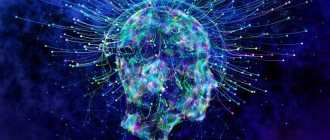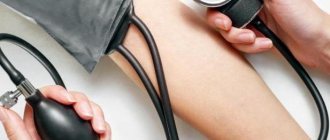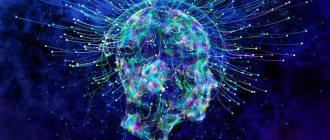What is fainting? This is how the body sends a signal that the brain is not getting enough oxygen and blood. Having lost consciousness, the person falls to the ground and passes out. First aid for fainting will help quickly normalize your well-being.
First aid for fainting. Photo: nur.kz.
Causes of loss of consciousness:
1. Insufficient blood flow to the brain. 2. Lack of oxygen in the blood 3. metabolic disorder, that is, brain nutrition. 4. disruption for any reason of the transmission of impulses along the axons of the brain or the occurrence of pathological discharges in the neurons of the brain.
Now let's look at it in order.
Insufficient blood flow to the brain can occur:
1. As a result of an increased reaction of the autonomic nervous system to various psychological situations such as excitement, fear, fatigue, a sharp expansion of peripheral vessels occurs, blood rushes down due to a decrease in resistance, a lack of blood and, consequently, oxygen in the brain is formed.
2. Due to cardiac reasons, when the cardiac ejection fraction, that is, the amount of blood pushed into systole by the left ventricle of the heart, sharply decreases. This condition is typical for acute myocardial infarction. Heart rhythm disturbances, such as atrial fibrillation (chaotic contraction of the atria, independent of the ventricles of the heart), atrioventricular blockade of nerve impulses between the atrium and the ventricle, sick sinus syndrome (the central nerve connection that regulates the rhythm of the heart). As a result of these pathologies, interruptions occur, entire sets of heart contractions disappear, the flow of blood becomes irregular, which also leads to brain hypoxia. With significant stenosis of the aortic heart valve, syncope is also possible due to difficulty in releasing blood into the aorta.
Right away in this section I want to make a reservation that incomplete blocks of the Hiss bundle branches (nerve fibers in the ventricles of the heart), often found on cardiograms, do not lead to attacks with loss of consciousness and in general in most cases do not have any symptoms or diagnostic value if they exist for a long time time.
3. Orthostatic syncope, occurs in people with low blood pressure, when hypertensive patients take inadequate doses of antihypertensive drugs, as well as in elderly people. It occurs when there is a sudden change in body position (suddenly getting up from a bed or chair). The reason for its occurrence is a delay in the reaction of the vessels of the lower extremities, they do not have time to narrow in time and as a result there is a decrease in blood pressure, a decrease in cardiac output and, again, a lack of blood supply to the brain.
4. With atherosclerotic changes in large vessels supplying the brain, and these are the carotid and vertebral arteries. Atherosclerosis, as we know, is cholesterol plaques that tightly adhere to the wall of the vessel and narrow its lumen.
5. Loss of consciousness is possible when a blood clot appears that completely covers the vessel; the risk of thrombosis exists in the postoperative period of any surgical interventions, especially when replacing heart valves with artificial ones, after coronary artery bypass surgery, in the last two cases, since there is a foreign body in the body, the risk Thrombosis exists throughout life and requires constant use of indirect anticoagulants. Heart rhythm disturbances such as constant or periodic atrial fibrillation (atrial fibrillation) also have a high risk of thrombosis and also require the use of antiplatelet agents or indirect anticoagulants.
6. In case of anaphylactic shock (severe manifestation of an allergic reaction to any drug), as well as infectious-toxic shock (in severe infectious diseases), loss of consciousness is also caused by the expansion of peripheral vessels and blood outflow from the heart, but due to the release of blood is a vasodilating (vasodilating) mediator of inflammatory and allergic processes - histamine and other intracellular elements that appear during the destruction of cellular structures, they not only have a vasodilating property, but also increase the permeability of small capillaries, due to which blood rushes to the skin, the circulating volume of blood decreases , and again, cardiac output decreases, the result is impaired blood supply to the brain and syncope.
Recommended examinations and tests to clarify the cause of syncope (short-term loss of consciousness), which may be due to insufficient blood supply to the brain.
1. Consultation with a neurologist to exclude neuro-vegetative-vascular dystonia.
2. Consultation with a therapist to exclude hypotension (low blood pressure, below 100\60 mm Hg), as well as prescribing adequate doses of antihypertensive therapy in the presence of hypertension.
3. ECHO KG (ultrasound of the heart), electrocardiogram, Holter ECG (daily ECG), all this to clarify the existence of heart defects, the presence of arrhythmias in the heart.
4. Doppler ultrasound examination of the vessels of the neck and brain reveals atherosclerotic or other pathology in these vessels.
Loss of consciousness due to lack of oxygen in the blood occurs with the following diseases and conditions:
1. Lack of oxygen in the inhaled air, that is, prolonged exposure to a stuffy room.
2. Loss of consciousness is possible in case of severe lung diseases, primarily with exacerbation of bronchial asthma, the appearance of status asthmaticus, and with high degrees of chronic obstructive pulmonary disease (obstructive bronchitis).
During a paroxysm of prolonged cough in patients with obstructive pulmonary disease, the mechanism of occurrence is twofold, firstly directly due to a lack of oxygen in the blood and secondly, intrathoracic pressure increases during prolonged coughing, which interferes with venous return, as a result of which cardiac output also decreases.
3. In case of anemia with low hemoglobin of a high degree (below 70-80 g/l), fainting is possible under any conditions. With higher hemoglobin numbers, the likelihood of loss of consciousness increases when you are in a stuffy room.
4. In cases of carbon monoxide poisoning. CO is a colorless, odorless and tasteless gas, which increases the risk of poisoning. Poisoning often occurs in everyday life during the heating of stoves, gas water heaters and the lack of the required exhaust hood and ventilation of the room, when exhaust gases from the car engine enter the driver's cabin (for example, while the driver is sleeping in the car with the engine running with the windows closed or in the garage). Penetrating through the lungs into the blood, carbon monoxide combines with hemoglobin to form carboxyhemoglobin, blocks the transport of oxygen in the blood, acute oxygen starvation occurs - hypoxia, in addition, by binding to myoglobin (a protein contained in the muscles), CO inhibits the contraction of the myocardial muscle.
To exclude the causes of short-term loss of consciousness due to lack of oxygen in the blood, the following examinations and tests are desirable:
1 A general blood test, which determines the amount of hemoglobin and red blood cells, as well as the number of eosinophils, can determine the presence of bronchial asthma.
2. X-ray of the lungs - exclude chronic bronchitis, cancer and other lung diseases.
3. Spirography (we exhale air with force into a special device) allows us to judge the functions of external respiration.
4. If you suspect bronchial asthma of allergic origin, it is useful to visit an allergist and test for allergens.
Syncope when the metabolism (nutrition) of the brain is disrupted occurs mainly with a disease such as diabetes.
1. When an overdose of insulin occurs, a decrease in the amount of sugar in the blood occurs - hypoglycemia, as a result of which the nutrition of the brain is disrupted, which leads to a disruption in the function of transmitting nerve impulses.
2. Diabetic ketoacidotic coma - on the contrary, occurs with a lack of insulin and an increased amount of glucose in the blood (blood sugar above 17-20 mmol\l). characterized by increased formation of ketone bodies (acetone, urea) in the liver and an increase in their content in the blood. As a result of metabolic disturbances in the cells of the brain and, as a consequence, loss of consciousness. The peculiarity of this coma is the smell of acetone emanating from the patient. Lactic acidosis (lactic acid coma) in diabetes mellitus usually occurs against the background of renal failure and hypoxia. There is a large amount of lactic acid in the blood. Unlike ketoacidotic coma, there is no smell of acetone. To diagnose diabetes mellitus, repeated blood tests for sugar are required from a finger stick on an empty stomach. When glucose in capillary blood increases by more than 6.1 to 7.0 mmol/l, it indicates an impairment of glucose tolerance (that is, a decrease in insulin sensitivity to glucose), an increase in glucose over 7.0 mmol/l is alarming in terms of diabetes mellitus, and then it is required donating blood after a load with glucose (on an empty stomach, donate blood for sugar, then drink 75 grams of glucose dissolved in a glass of water and two hours later the level of sugar in capillary blood is measured. A glucose level after a load above 11.1 indicates the presence of diabetes mellitus. Also important glucose content in urine (should not be normal).The most accurate method for diagnosing diabetes mellitus is the measurement of glycosylated hemoglobin, which is a time-averaged indicator of the concentration of glucose in the blood for 6-8 weeks preceding observation. It makes sense to perform an ultrasound examination of the pancreas , in order to exclude diseases leading to diabetes.As is known, insulin is produced in the cells of the pancreas.
Impaired transmission of impulses along brain axons or the occurrence of pathological discharges in brain neurons occurs in the following conditions:
1. First of all, epileptic syndrome - repeated seizures, often with loss of consciousness, arising as a result of hypersynchronous discharge of brain neurons (pathological foci of excitation in the cerebral cortex). Seizures, unlike other cases of loss of consciousness, are characterized by the presence of clonic (muscle twitching) and tonic (increased tone, muscle tension) convulsions.
2. With various traumatic brain injuries in which a concussion, bruise, or compression of the brain occurs, resulting in a displacement of the cerebral hemispheres relative to the rigidly fixed brain stem, a transient increase in intracranial pressure occurs, tension and twisting of long axons (nerve fibers) occurs ) in the depths of the white matter of the hemispheres, and the brain stem. In mild cases, as a result of this process, the conduction of axons is temporarily disrupted (temporary, short-term loss of consciousness), in severe cases, swelling and rupture of axons and small vessels accompanying them occurs (coma - long-term loss of consciousness of varying degrees).
3.Loss of consciousness may occur when an ischemic or hemorrhagic stroke occurs. The difference between them is that in the first case, a violation of the blood supply to the brain occurs due to blockage of a vessel due to a blood clot, which may be caused by atherosclerosis or the toxic effects of certain substances (in practice, I observe a large number of ischemic strokes after consuming alcohol substitutes, including and after taking large quantities of alcohol-containing infusions sold in pharmacies.
Hemorrhagic stroke (intracerebral hemorrhage) is a rupture of a cerebral vessel, always has a more severe course and a higher percentage of deaths.
One of the important factors in the development of both types of strokes is uncontrolled hypertension; for the brain it is unfavorable in terms of the development of strokes, both constantly high and spasmodic (from low to high blood pressure).
Which doctor will help?
It often turns out that the first doctor you have to contact is an ambulance worker. Further, if necessary (depending on the causes of fainting), the patient can be sent to a hospital, where he is treated by a general practitioner. Depending on the situation, completely different specialists can be involved in the treatment process: a surgeon, a neurologist, a psychiatrist, a cardiologist, an endocrinologist, an infectious disease specialist and others.
Delicious recipe! Korean mackerel hee fish recipe
If it turns out that the cause of fainting is a sharp emotional shock (for example, stunning news), which also often happens, or, for example, physical exhaustion of the body as a result of an infectious disease or heavy stress, then, in such cases, hospitalization may not be required.
First aid for loss of consciousness
What to do if you witness another person losing consciousness.
1. If loss of consciousness occurred in a stuffy room during mass events. Fainting is more likely due to lack of oxygen or due to overexcitation of the autonomic innervation of the body. The mechanism of occurrence of this condition is sometimes mixed.
Actions in this case:
1. Extend the collar of a shirt or other clothing. 2. Open a window to allow oxygen to enter or take the victim to a well-ventilated area. 3. Apply a cotton swab with ammonia to the nasal passages for up to 1-2 minutes. 4. If after this it does not come to consciousness, place it on your right side, place your right hand along the body, place your head on the back of your left hand. In this position, the likelihood of tongue retraction is less, and the airways are freer. If you can, check with the index finger of your hand, having first unclenched your jaws, whether the tongue is retracted into the throat. If so, then you need to clear the airways by fixing the tongue to the side surface of the oral cavity (pressing it with the thumb of your hand). Naturally, completely blocking the airways. 5. Check if there is a pulse and breathing (how to do this is described below). 6. If there is no pulse and breathing, you can, if you know how, before the ambulance arrives, begin artificial respiration and chest compressions (the method is given below). 7. Call an ambulance and describe the symptoms of loss of consciousness as accurately as possible.
If you find an unconscious person on the street
1. Find out from witnesses, maybe someone knows what the victim is sick with. Sometimes chronically ill patients have data about their illness and a record of possible help in their pockets. If you find them or receive data about the patient, follow the recommendations of the note or report all the data to the ambulance. 2. Check by palpation whether there are open injuries and bleeding; if they are detected, try to stop them using available methods until the ambulance arrives. 3. Check if there is a pulse, the pulse is best felt on the carotid artery, to do this, place the index and middle finger of your right hand on the thyroid cartilage of the victim, smoothly lower your hand down the neck (with the patient lying down) to a soft depression, this is where it should be felt pulse. 4. If there is no pulse, no breathing (no movement of the chest, no fogging on the glass brought to the victim’s nose and mouth), and the skin is still warm, we check the reaction of the pupils to light. In a living person, or in clinical death, the reaction of the pupils to light is preserved. We check as follows:
If the patient lies with his eyes closed, open the eyelids; if there are signs of life, we observe the constriction of the pupils to the light. If the victim’s eyes are open, cover them with your hand for 10 seconds, then remove your hand; you should again observe a constriction of the pupils. In the dark, any illumination (flashlight, cell phone) is used to check. Also, to determine signs of life, the corneal reflex is checked; for this, a handkerchief or cotton wool; if not, then we touch the eyelids with another soft textile - blinking occurs in a living person.
If there are signs of life or clinical death, it is possible, before the arrival of emergency medical services, to begin artificial respiration and indirect (direct for specialists, it is carried out when the chest is opened) cardiac massage. Most often, the early start of resuscitation measures brings more benefit than the emergency medical team arriving after some time. The only exception for artificial respiration performed by non-specialists is a suspicion of a spinal fracture in the cervical region.
Symptoms of dizziness headache fainting
Attacks of dizziness with loss of consciousness are an alarming symptom that may indicate serious illness.
Dizziness, accompanied by short-term fainting (as well as nausea, vomiting, weakness, darkening of the eyes and other signs of deterioration in health) should not be ignored - it is imperative to find out the cause of these manifestations in the clinic.
Let's consider what reasons can cause sudden dizziness and temporary loss of consciousness, and how to provide primary care to patients who faint.
Methods of performing artificial respiration and indirect cardiac massage.
We place the patient lying on his back, having previously cleared the airways of possible vomit and mucus. We tilt the victim's head back by placing a cushion under the occipital region of the head so that the lower jaw moves forward. When clenching the jaws tightly, you can use the technique of compressing the lateral surfaces of the lower jaw. Next, we perform artificial respiration using the “mouth to mouth” (most often used) or “mouth to nose” (used in cases of inaccessibility of the oral cavities). To do this, we take 2 breaths into the patient through a handkerchief, having previously pinched the nose or mouth (depending on the type of artificial respiration), then we press with straightened arms folded one above the other in the area of the lower third of the sternum in the amount of 8-10 presses, with reasonable application strength to move the chest, and naturally freeing the airways for air to escape. When performing artificial respiration and chest compressions together, the following technique is proposed: One breathes “mouth to mouth” or “mouth to nose” in the amount of one breath, the other makes 4-5 compressions on the chest.
Cycles of artificial respiration and chest compressions are repeated until emergency medical assistance arrives.










